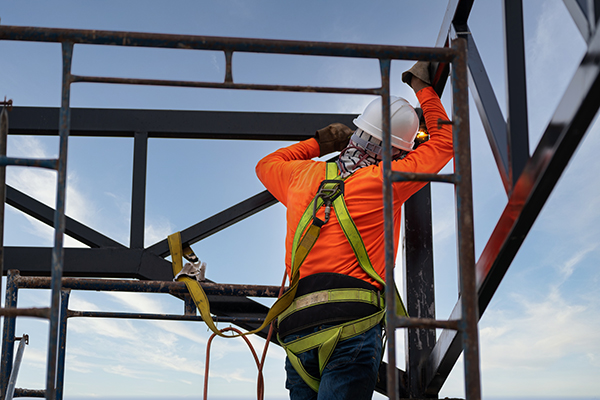Welding Safety for Roofers: 4 Top Tips
Author: Heidi J. Ellsworth | December 12, 2023
Fire tragedies as a result of unsafe welding practices have been reported on both small and larger roofs under construction, whether due to torch-down applications, welding difficulties or accidents with flammable materials. When roofing contractors see a need for metal welding on the roof, it's important that all employees keep welding safety top of mind, and are properly trained to protect the building and, most importantly, to prevent accidents and injuries.

Welding Safety for Roofers
If you are not an expert in welding safety, there are many sources for training and education, including the American Welding Society (AWS). Any roofers who are going to be welding regularly must have appropriate safety training. Companies like iAuditor also provide resources that can support your safety program.
Before your roofing company takes on any welding job, make sure you're prepared. That includes having a fire watch individual with an appropriately sized fire extinguisher present, and obtaining a hot work permit if the property owner or company policy requires one.
Here are four basic tenets of welding safety for roofers that can keep buildings and employees safe.
1. Clear Hazards From the Area
Before beginning a rooftop welding project, all workers should investigate the surrounding area for safety hazards, and clear the roof within 35 feet of the rig if possible. Move all flammable materials like wood, bundles of shingles, cardboard boxes, rags, paper bags, dry leaves, gas cylinders, wood, paint and solvents far from the welding area.
2. Cover Cracks, Gaps and Holes
Small openings like pipe holes and cracks can be a significant fire hazard if they catch a drip of molten metal. A flying spark can lodge in the tiniest of cracks and smolder for minutes before it's noticed. When you're checking a roof for hazards, identify any small holes or gaps, and cover them with nonflammable material or set up nonflammable screens.
3. Prevent Electric Shock
Be sure to inspect all welding equipment, especially the electrode holder, before proceeding with work. Never touch the metal part of the electrode holder with skin or wet clothing. Electrocution can be a serious risk to welders when there is a sudden discharge of electricity. Emphasize to your crew that electrical fires happen every day, and that regular equipment maintenance is a critical safety step.
4. Dress for Fire Safety
You may not think of a shirt and pants as personal protective equipment, but a roofer's clothes are an important part of welding safety. According to the AWS, a stray spark "can easily become lodged in the crevices of rolled-up sleeves, [shirt collars], pant cuffs or pockets" and start a fire. Anyone welding on a roof should wear the appropriate flame resistant (FR) clothing, such as a welding jacket and FR pants. FR clothing is made from natural materials, usually cotton. Avoid synthetic fabrics like polyester, which can melt onto the skin and cause severe burns.
Overexposure to welding fumes and gases can also endanger a roofer. Make sure all crew members who are welding and working nearby are using respirators if necessary. And, of course, your fire watch worker should always be nearby to put out any fires in the early stages.
Whenever you are welding on a roof, employees always need to be aware of fire danger and take appropriate precautions. Following a few basic steps, every time, can help protect your crew and the jobsite.